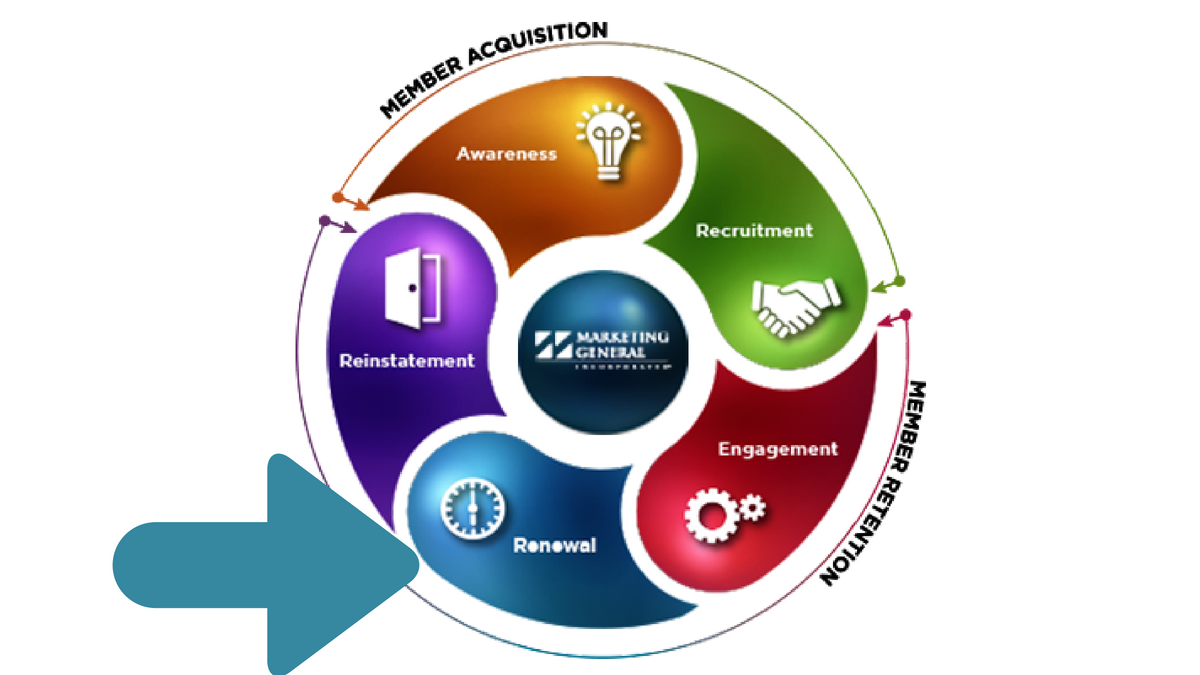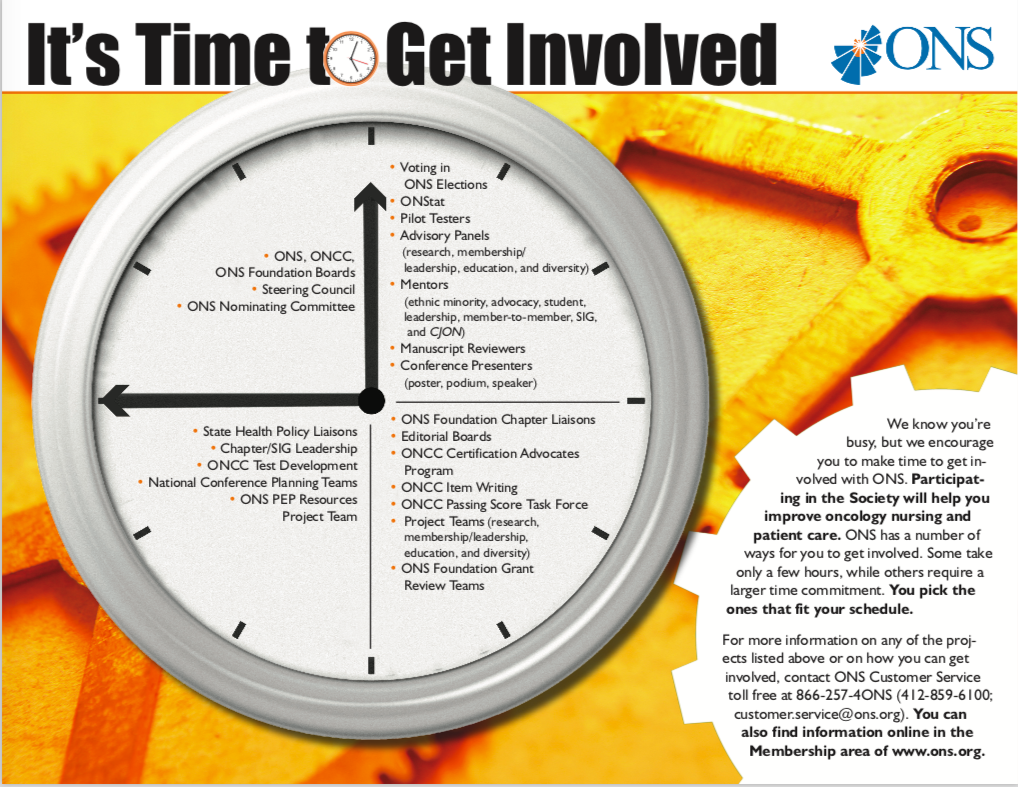At some point, after generating leads and nurturing relationships and persuading people to join and helping them find their own individual engagement paths, it’s time to ask your members to renew, to stick with you another year.
Membership retention is your goal – renewal is the process by which you achieve your goal. Renewal is all about how many of what types of notices are sent to whom on what schedule. In other words, it’s a campaign that reminds members why they want to stick with you and asks them to invest in another year.
Notice I didn’t say “convince” members. If you’ve been doing a good job with relationship building along the way, as so much of this series has focused on, renewal should be basically a formality. You are already a vital partner in your members’ success. Paying up for another year is just the final step. And frankly, if you’re not a vital partner in your members’ success, it’s going to be very difficult to convince them otherwise in a series of communications, no matter how persistent and persuasive your messaging or attractive your graphics.
As you’re constructing your renewal campaign, just as in earlier campaigns, you should answer the following series of questions:
- What are our goals?
- Who are our audiences? What do we know about them?
- What’s the offer?
- What are our key messages? What messages are persuasive to our various audience segments?
- What tactics are we going to use? What platforms are available to us for getting our message out?
- What resources can we enlist?
- What’s the schedule? Who’s responsible to do what?
- How will we know whether or not we met our goals?
Goals
For a renewal campaign, generally speaking, your goal is going to be to achieve a certain retention percentage. What’s a good retention percentage? The annual Marketing General Membership Marketing Benchmarking Report for 2017 lists an average renewal rate of 77% in professional societies and 88% in trade associations. (Marketing General will be releasing the 2018 data later this month, and you can register for the FREE release webinar here.)
What does that mean for your association? Maybe not that much. If, as a trade association, your retention rate has historically been 93%, “achieving” the industry standard would be cause for concern – why did your retention rate drop off 5%? Likewise, if, as a professional society, your retention rate has historically been 68%, setting a goal of 77% for the next year is likely unattainable.
You probably want your goal to be a little bit of a stretch, but not unrealistic.
Audiences
Well, for a renewal campaign, your audience is obviously your members. But I’d urge you to dig deeper and think about your segments. Who are the people who ALWAYS renew? Is there a segment of Texans that joined a year ago to get the member rate for your conference that was going to be in Dallas, only this next year, it’s in Vancouver? Do you have members who still prefer to renew by check? Do you have a bunch of members who all work for the same organization? Do you have a Pinterest page that draws attention from your women members? Or an Instgram account that attracts your young professionals? Do different sized companies use your membership benefits differently? What about your lapsed members? Is it time to solicit them again?
The Offer
Again, obviously, it’s to renew. One trap that associations fall into is getting late in a renewal campaign, seeing that retention rate is falling short of goals, and getting desperate – that is, starting to offer those slowpokes incentives to renew. The problem with that is that you train your members into bad behavior. “I waited to renew last year, and they offered me (extra months, a gift, a discount). I’ll do the same again this year and see what I can get.”
If you want to offer some sort of premium, reward the behavior you wish to see: renewing early in the cycle. Offer something special to the people who renew on the first notice, and for a limited time only. Train your members to good behavior.
The Messages
This is where you start thinking about those segments you identified in considering your audiences and thinking about what will be appealing to them. Remind different segments of what specific benefits they used in the past year, the problems you helped them solve or the goals you helped them achieve, and preview what you have planned for the coming year related to those problems and goals.
Trade associations with relatively few, large members should prepare individualized use reports for their member companies, not least of which because the person approving the renewal payment is often not the same as the many people who used benefits.
Even individual membership associations with lots of members should segment their messages, though. A student member does not interact with your association the same way as someone who is in the first five years of her career does not interact with your association the same way as someone who is mid-career does not interact with your association the same way as someone who is within a few years of retirement.
Tactics
Likewise, different members probably prefer to interact with your association on different platforms. Regardless of the segment, mix up your platforms. Don’t just send all your notices via email. Mix in some ads on your own website, some social media postings, print mail (maybe a traditional cover letter and printed renewal notice, maybe a colorful postcard, maybe both). Try a simplified landing page. Record a video of a few members explaining why they love your association. Maybe try a call from your CEO for high-profile members.
How many notices should you send? More than one and less than one hundred. OK, I’m being a little snarky there, but the only way to know is to test. Run experiments on how early to start the cycle (yes, it’s possible to start too early – have you ever gotten a notice to renew a magazine subscription before you’ve even received your first issue?). Run experiments on how to space out the notices. Run experiments on how long to keep pursuing people. Pay attention to results.
While you’re experimenting with all these platforms and tactics, pay attention to what happens. Use trackable URLs, watch for bumps in activity within a few days of the arrival of mailed notices, see who’s clicking on your social media postings or ads. Then as the campaign progresses, you know where to devote more resources, where to tweak what you’re doing for greater effectiveness, and where to stop putting good money after bad. Speaking of….
Resources
Money, yes, but also staff time and energy, volunteer help, even your whole membership. Take the time to segment and craft targeted messages. Take the time to run experiments and track what happens. Ask your volunteer leaders for their help – can they remind a colleague to renew? Tell your members it’s renewal season and ask them to help spread the word on social media.
Schedule
It’s important to create a detailed plan with what type of notice is going to go to whom with what messaging on what schedule, and who’s responsible to make that happen. It creates accountability, helps you with your results tracking, and ensures that your campaign doesn’t get lost in the shuffle of day-to-day busy-ness.
Metrics
Remember to sit down at the end of the campaign with the entire team who worked on it and assess how you did. Did you meet your initial goals? Why or why not? What worked better than you anticipated? What didn’t work? Is that something you just need to adjust next time, or should you dump it entirely? Celebrate your successes and capture what you learned from your failures. It will help you improve your next campaign. And don’t forget to thank everyone who helped.
Membership lifecycle graphic credit: Marketing General Inc.




